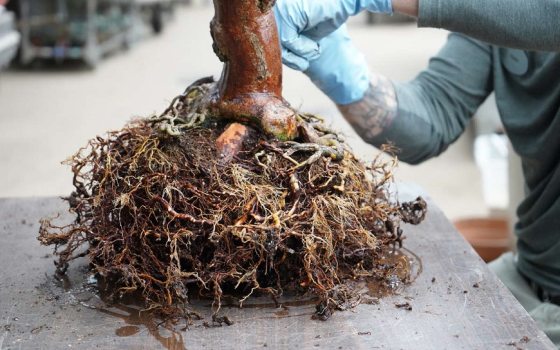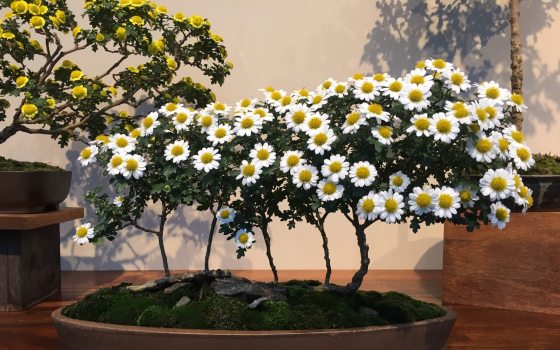It’s been five months since we shared with you the initial steps in training one of our azalea standards into a bonsai … and the many challenges about the process. If you recall, this strikingly beautiful azalea came to us potted at the wrong angle and with a considerable number of branches to remove and deadwood to clean. A tall and slender tree, its branches originally pointed at a downwards angle and featured jagged movement … a far cry from our eventual intent of training it into having thick to thin branches alternating throughout the tree in a uniform, balanced manner. Despite its challenges, the azalea has made tremendous progress and I’m so excited to share that progress with you.
From the time we started training the azalea in April 2019 up until our first blog post in late May, we removed its flowers to get a better look at its form and give it energy to focus on growth rather than using that energy to lose its flowers on its own. We then removed dead branches and material from tree, which in turn opened it up to get a feel for its design potential. After giving the tree time to rest, we removed all of its foliage, which allowed for more efficient wiring, and removed branches to allow for proper spacing from both aesthetic and horticultural standpoints. We wired the tree to define its features and bring out its characteristics, all with the goal of mimicking unseen forces on the tree to give it movement toward one side.

After completing the wiring in May, we gave the tree time to adapt, with many check-ins along the way. We wanted to give the tree ample time to develop new growth closer to the trunk, allowing us to form a smaller, more compact tree. I periodically pruned some of the new growth along the way to maintain a desired length in the overall silhouette.
As of July 2019, I noted that the azalea’s growth was a little slower than anticipated, which I’m attributing to less than optimal soil conditions in its container. The azalea has most likely been in the same container for years before it came to us. Once it’s time to repot the azalea next spring, we’ll introduce it to new media that’s better for aeration and drainage. The springtime is a perfect time for repotting, as the tree has accumulated its energy over the fall and winter months, and by spring is becoming active and ready to push new roots. Despite those contributing factors, the azalea has filled out nicely, to the point where it's experiencing greater volume, allowing me to get a much better sense of bonsai pad placement and potential.
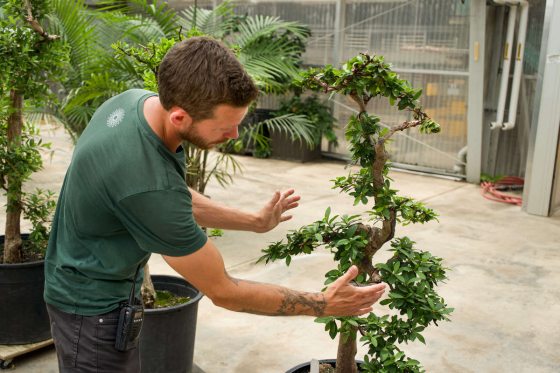
Which brings us to October 2019. After we let the tree largely rest the last few months, it made remarkable progress in pad development and its growth buds came in very nicely. It was ready for large leaf removal, more branch pruning, and some wire removal. This azalea in particular has a lot of large leaves. I went through and removed the largest of those leaves in order to increase the branches’ air and light circulation, as well as to balance the overall tree’s aesthetic. Azaleas are more dominant at the bottom, so I removed a lot of the larger leaves farther down on the tree in order to give it a top-to-bottom balanced appearance.
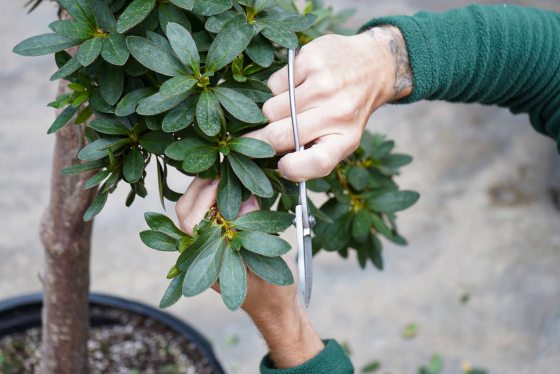
This month, right before the tree goes dormant for the winter, was an optimal time to prune and remove areas where I don’t want growth to occur. If I waited to remove those areas until next spring or summer, there’s a good chance that the tree would be using more energy in areas I’d want to remove (which could result in multiple buds I’d then have to remove), rather than the areas that should be developed. The tree’s growth over the last few months led to the development of some overlapping and crossing branches, which I removed to help contribute to the tree’s desired fan-like structure.
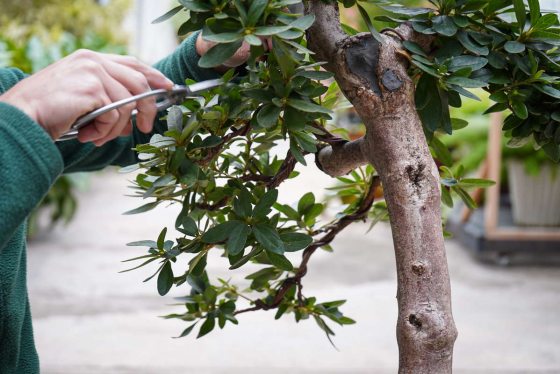
During wiring, branches are bent in order to create rhythms and allow for optimal branch spacing. Some of the wire that I placed on the tree back in May was starting to bite into the wood, particularly on the bottom branches, since azaleas tend to grow stronger at the bottom. After I opened up the form by removing large leaves and removing unwanted branches, I removed that wire. Azaleas are very prone to long-term scarring and can’t create new scar tissue as efficiently as conifers, so it’s important to remove wire once it starts to bite into the wood. Wiring can also be a contributor to reverse tapering if it stays on the tree too long.
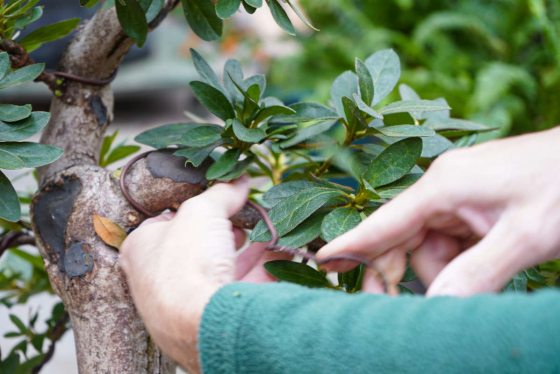
With that, the azalea is ready for a long winter’s slumber in one of our cool houses, which will dip down to about 35 or 45 degrees Fahrenheit. It will go into a dormant phase in the coming weeks, lasting until March or so. During that time, I’ll let the azalea rest. Come spring, it will have a lot going on. We’ll repot the azalea when its buds are just starting to grow. I’m really looking forward to seeing its root structure, which will help inform me if the azalea should be repotted at an angle. This particular bonsai has a very straight trunk, so depending how the branch pads develop and whether or not we choose to reangle it, it will either become a slant or informal upright bonsai.
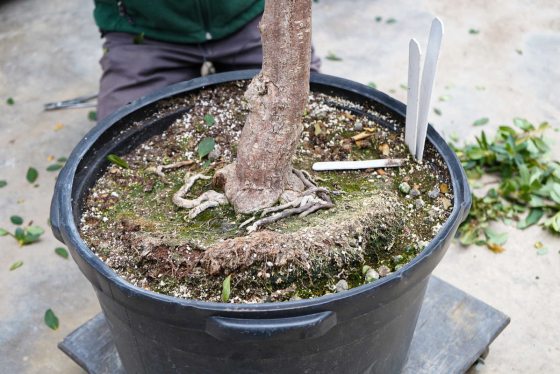
Come spring, we’ll either let the azalea flower or we might remove the flowers right away, which would allow the tree to focus more energy on vegetative growth. That’s a decision to be made after its dormancy period.
Spring will also bring many more decisions for the azalea. I’ll be keeping a close eye on the potential of restyling it so its now-midpoint becomes the top of the bonsai. If I were to make the decision to restyle it in that way, I’d have to do so incrementally and slowly over the years, rather than making one big removal of its top section.
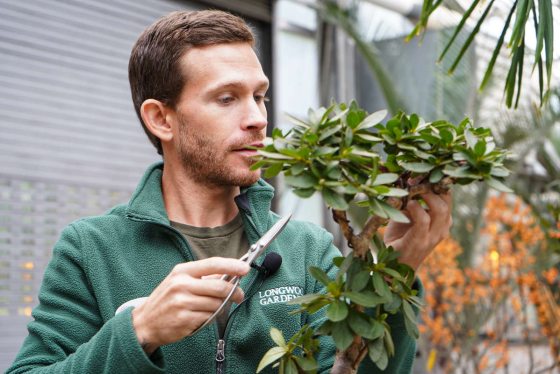
Whichever way the restyling decision falls, come spring, the training cycle will repeat itself. We’ll refine, we’ll unwire, we’ll wire again, all in the hopes that we’ll eventually get to a clip-and-grow state, meaning we’ll move away from needing to use wire as training progresses.

With bonsai, you must always reassess, reconsider, and adapt. Bonsai is always a work in progress … a continual journey. And that’s part of the beauty of bonsai … it’s a conversation that continues on.
